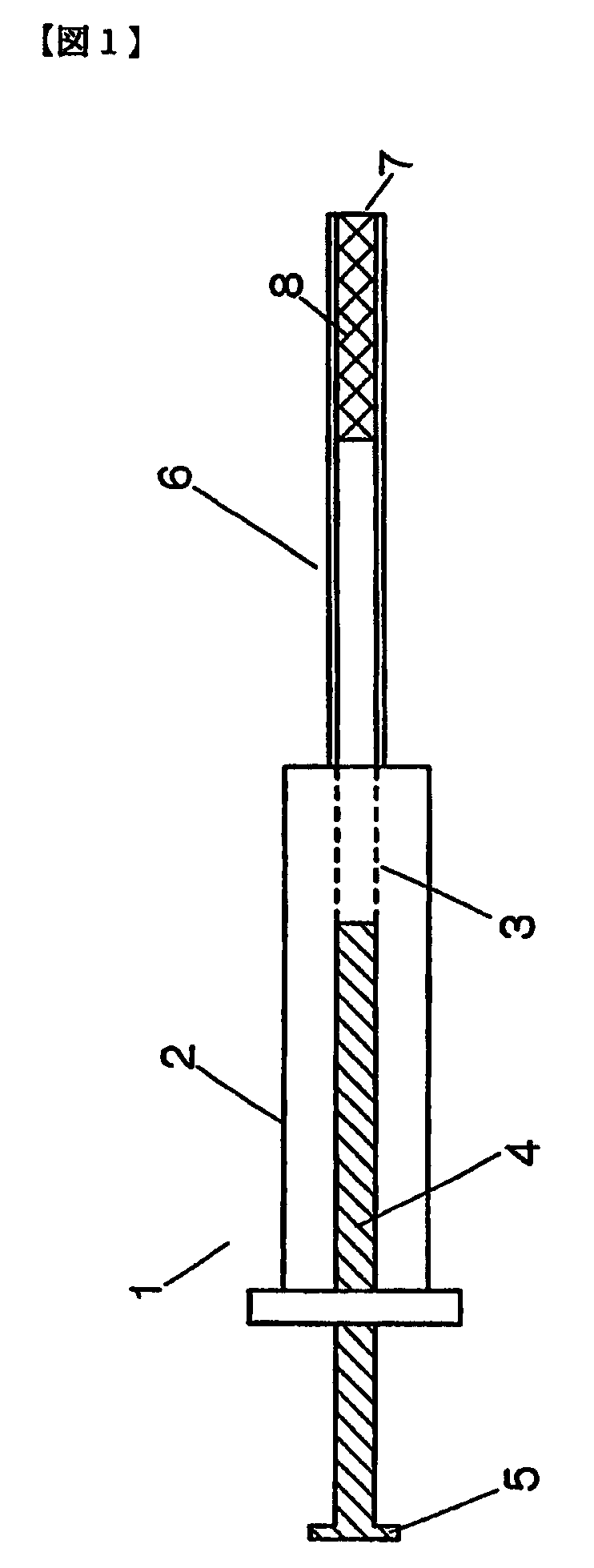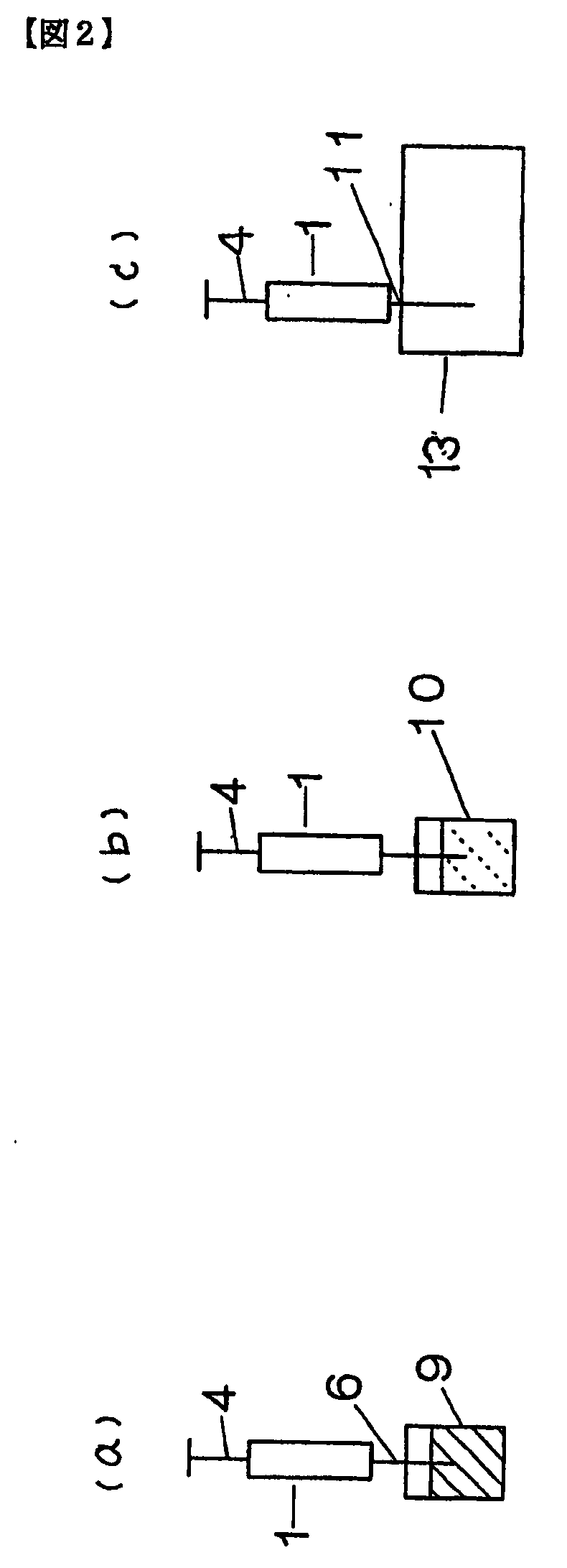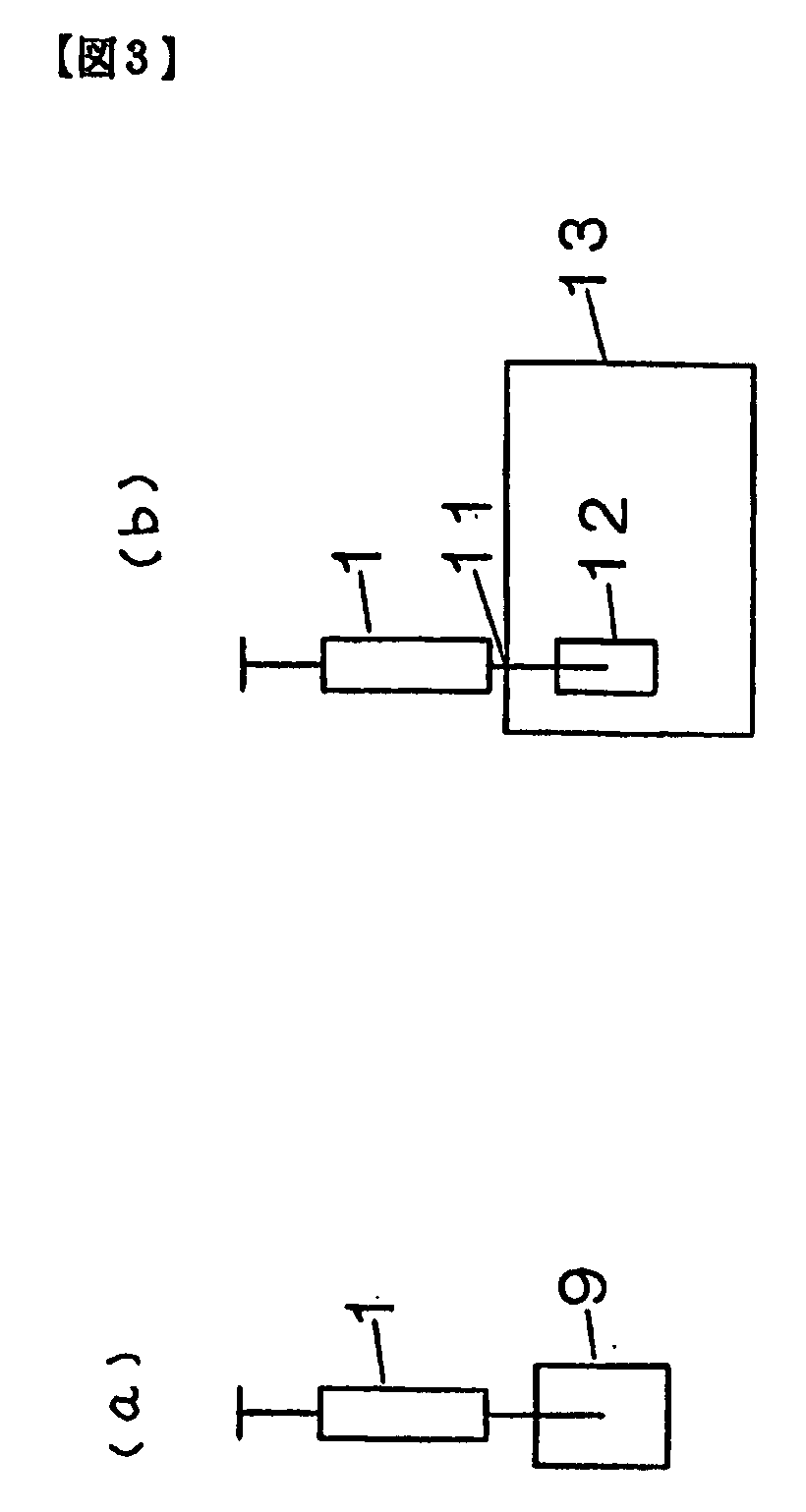Method for Solid-Phase-Micro Extraction and Apparatus Therefor
a solid-phase micro and extraction method technology, applied in the direction of separation process, liquid displacement, laboratory glassware, etc., can solve the problems of inability to apply the method to an analysis of a thermally decomposable component, reduced contact efficiency, and longer time required for equilibration of analyte with liquid phase, so as to achieve the effect of reducing the time required for running one analysis and increasing the flow ra
- Summary
- Abstract
- Description
- Claims
- Application Information
AI Technical Summary
Benefits of technology
Problems solved by technology
Method used
Image
Examples
example 1
[0049]An example of the present invention will be described with reference to FIG. 1.
[0050]A syringe 1 is comprised of a cylinder 2 and a plunger 4 which is slidably provided within an inner cylinder 3 of the cylinder 2. A head portion of the plunger 4 is provided with a handle 5. A tip of the cylinder 2 is provided with a needle 6. An inside of the needle 6, over a length of 4 mm thereof, is packed with a cylindrical porous body 7 which is made of a porous glass and through which pores 8, 8, . . . are formed along an axial direction, the average pore size being 10 μm.
[0051]A procedure for manually actuating the syringe 1 will be described with reference to FIG. 2. Methanol or the like is firstly passed through the needle 6 for conditioning a state of the porous body. The needle 6 is inserted through a sample bottle 9, then the sample is sucked up by actuating the plunger 4, FIG. 2(a). This suction allows the sample to pass through the porous glass of the porous body 7 when the samp...
example 2
[0053]A next example of the present invention will be described with reference to FIG. 3.
[0054]In contrast to Example 1 in which the analyte is eluted by the solvent, this example uses heat instead of the solvent in order to desorb the sample.
[0055]Specifically, the sample is sucked by actuating the plunger as in the case of Example 1, FIG. 3(a). Then, a heating mechanism 12 which is ordinary provided at the injection port 11 of the gas chromatograph is utilized. The needle 6 containing the sample which is diffused and retained in the pores 8, 8, . . . of the porous body as in the case of the above-described Example 1 is inserted into the injection port 11. Gas is supplied from a supplying port which is provided at an upper portion or a middle portion of the syringe 1 and the needle 6 is heated by the heating mechanism 12, then the sample undergoes physical desorption and is introduced into the gas chromatograph, FIG. 3(b).
example 3
[0056]Another example of the present invention will be described with reference to FIG. 4 and FIG. 5.
[0057]In this example, the needle 6 is constructed to be attachable / detachable with respect to the syringe 1. In this construction, the needle 6 is made short, and the tip of the needle 6 is provided with a capillary 62 having an insertion part 61 for the needle 6. This capillary 62 is constructed to be attachable / detachable with respect to the needle 6 with the above described cylindrical porous body 7 formed within the capillary 62 (FIG. 4). In this case, a tapered sample tip which has been conventionally used for chemical reactions or immunoreactions can be used as the capillary 62 with the porous body formed therein. In addition, as another example, a holding part 63 for holding the needle 6 is formed at a tip of the syringe 1 and also the corresponding insertion part 64 is provided at the needle 6 (FIG. 5).
[0058]Further, it is of course possible to use a tapered sample tip 65 ha...
PUM
| Property | Measurement | Unit |
|---|---|---|
| thickness | aaaaa | aaaaa |
| pore size | aaaaa | aaaaa |
| diameter | aaaaa | aaaaa |
Abstract
Description
Claims
Application Information
 Login to View More
Login to View More - R&D
- Intellectual Property
- Life Sciences
- Materials
- Tech Scout
- Unparalleled Data Quality
- Higher Quality Content
- 60% Fewer Hallucinations
Browse by: Latest US Patents, China's latest patents, Technical Efficacy Thesaurus, Application Domain, Technology Topic, Popular Technical Reports.
© 2025 PatSnap. All rights reserved.Legal|Privacy policy|Modern Slavery Act Transparency Statement|Sitemap|About US| Contact US: help@patsnap.com



